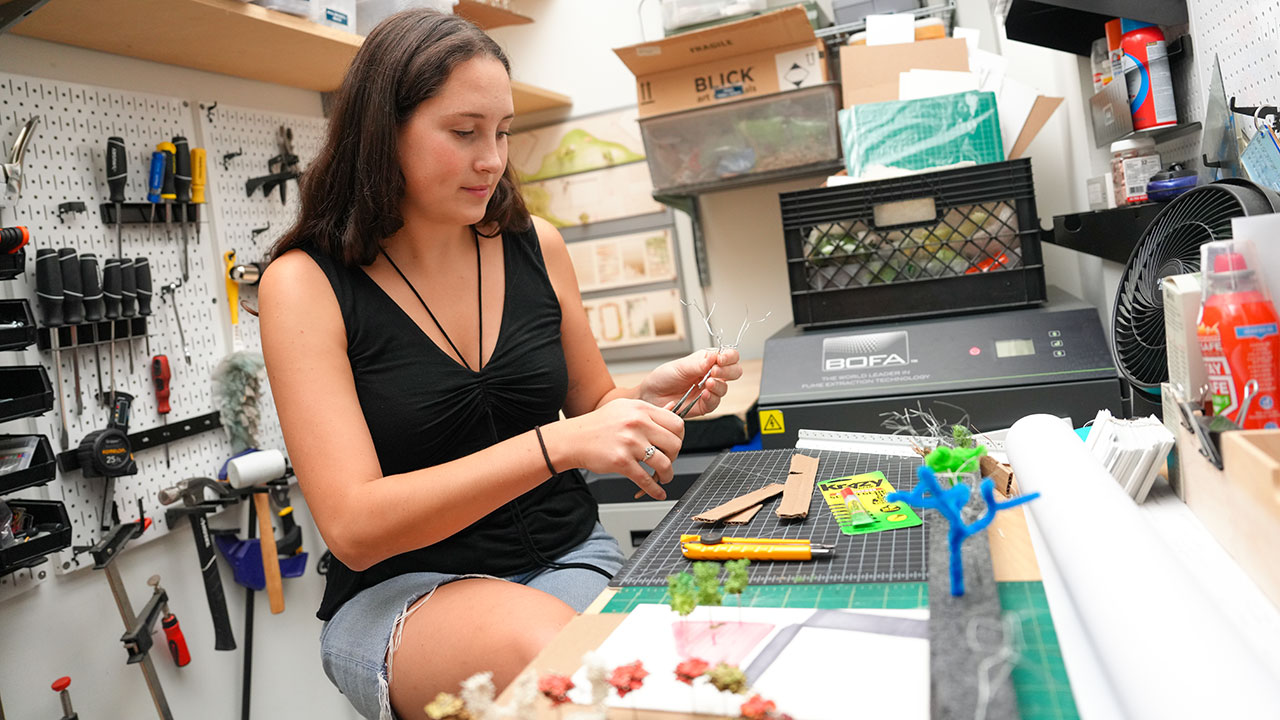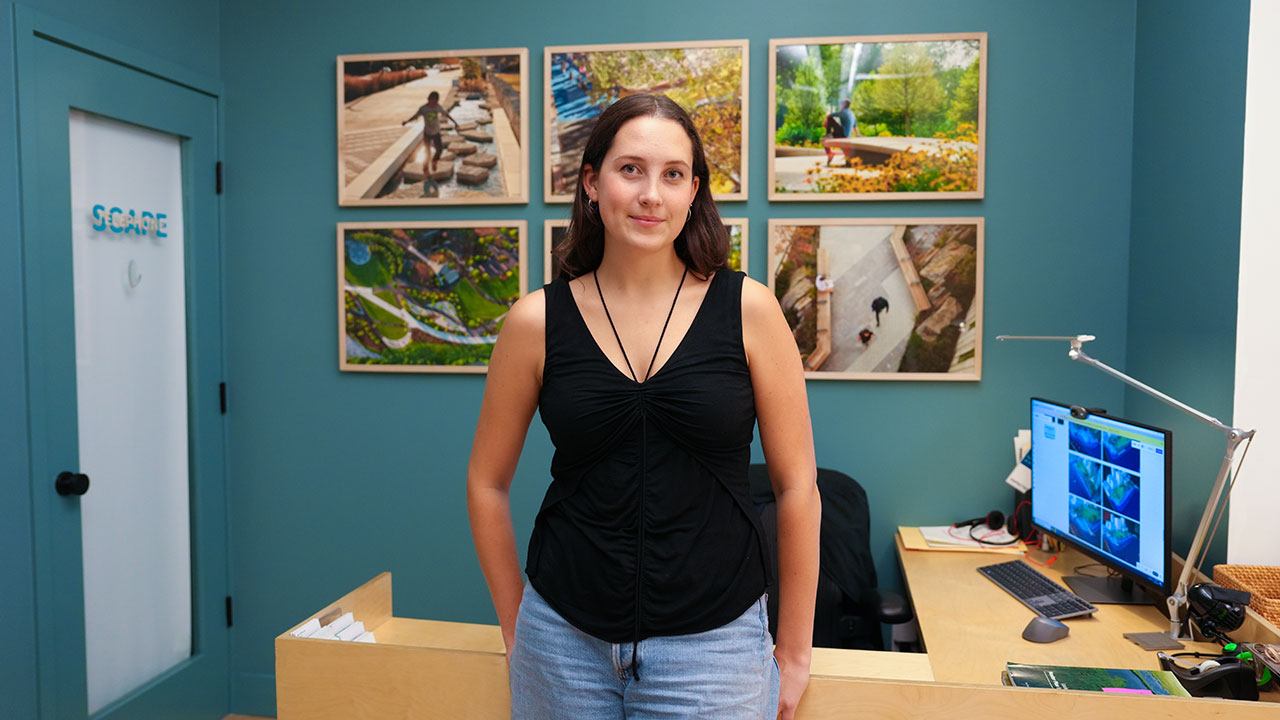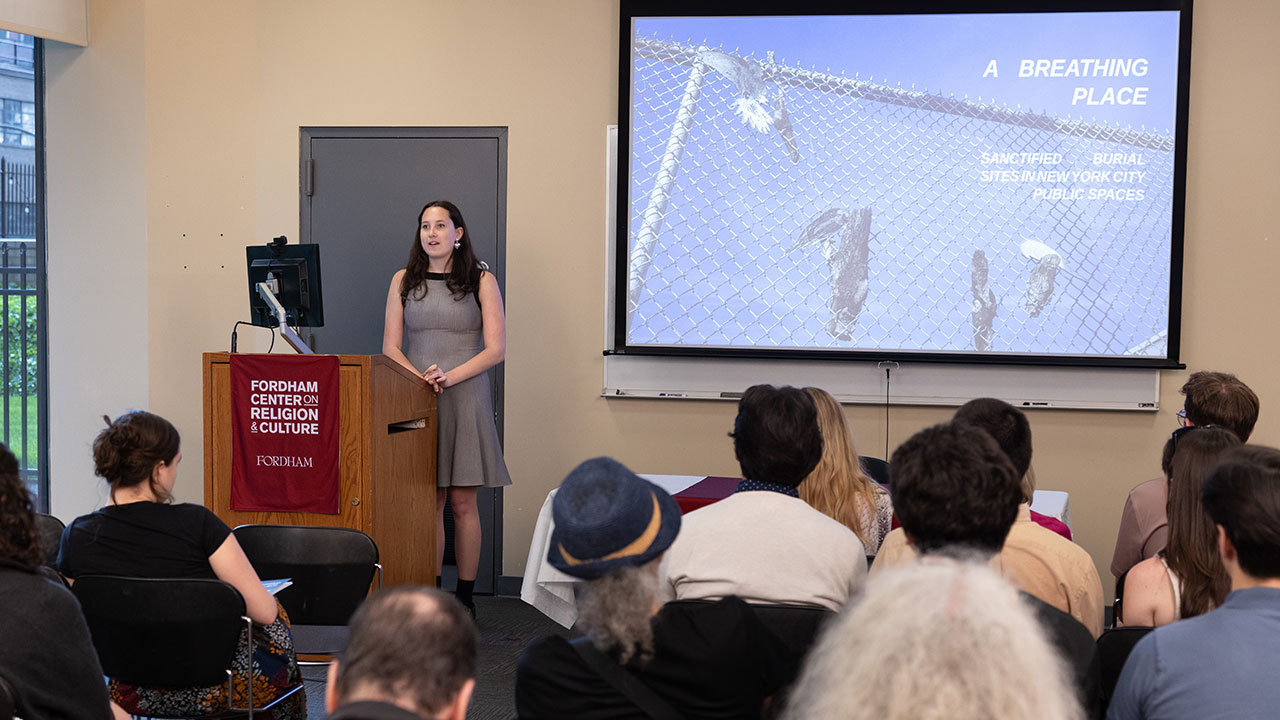 Amelia Medved at the offices of SCAPE in Manhattan. Photo by Taylor Ha.
Amelia Medved at the offices of SCAPE in Manhattan. Photo by Taylor Ha.
Amelia Medved, a recent Fordham graduate, spends her days as a studio assistant at SCAPE. It’s a landscape architecture firm in New York that designs and implements ecologically restorative and socially-engaged public spaces in urban environments across the U.S. And it’s an ideal landing place for Medved, allowing her to combine her interests and share her talents.
It’s also a career path she never heard of until she started at Fordham.
“I didn’t even really know that existed before my freshman year,” she said.
What she did have was curiosity—and strong interests.
“I knew coming in that I was passionate about environmental topics,” she said. “That was always on my radar.”
Finding Visual Arts
Medved declared a major in environmental studies and thought she might follow a more traditional path by pairing it with political science and eventually pursuing a law degree. But a couple classes into her first political science course, it became clear she needed to re-evaluate.
“It just wasn’t clicking for me,” she said. “I didn’t know what to do.”
Medved sought the guidance of her advisor, who helped her find another class “about an hour before the deadline” to make a change. They landed on Visual Thinking, an introductory visual arts class.
For Medved, it provided the clarity she had been looking for.
“It was really energizing,” she said. “I felt focused. I felt excited.”
 Amelia Medved is a studio assistant at SCAPE. Photo by Taylor Ha.
Amelia Medved is a studio assistant at SCAPE. Photo by Taylor Ha.
Building Her Own Degree
Despite appearing to have little in common, Medved’s distinctive double major—environmental studies and visual arts—was the key to her career path. She learned the basics in subjects like architecture and design but also had a forum to engage with deeper questions surrounding them.
“I very consciously used my degree to build an interdisciplinary foundation in sustainability and ecology … in community engagement, and some of the social justice teaching that is so critical to a Fordham education,” she said.
When Medved began working part time at the Center for Architecture, a few subway stops from Fordham’s Lincoln Center campus, she was exposed to landscape architecture—the holistic planning and implementation of outdoor spaces.
“I found my niche there between environmental design and ecology, community engagement, urban design, New York City history—all these building blocks that came together,” she said.
 Amelia Medved presents her research at Fordham's Lincoln Center campus. Photo courtesy of David Goodwin.
Amelia Medved presents her research at Fordham's Lincoln Center campus. Photo courtesy of David Goodwin.
Launching Her Career
In the spring of her senior year, Medved earned a Duffy Fellowship from Fordham’s Center on Religion and Culture which provides $5,000 stipends to support the study of issues at the intersection of religion and public life. Her project, “A Breathing Place: Sanctified Burial Sites in New York City Public Spaces,” culminated in a print publication detailing her original research about places like Hart Island and the 9/11 Memorial & Museum.
It’s work that she hopes to expand as she continues her career journey.
“I want to work as a landscape architect and develop my understanding of the way that people engage with their public spaces, like parks, especially in New York City,” she said.